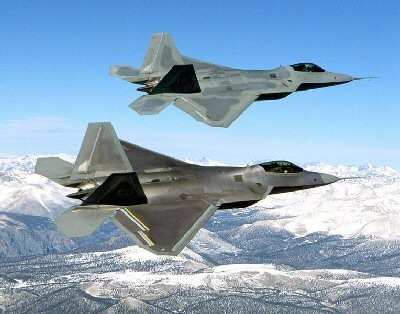Say Source Of Hypoxia Symptoms Has Been 'Determined With confidence'
Following months of life support systems components testing in the F-22 Raptor, officials have "determined with confidence" the source of previously unexplained physiological incidents, the director of operations for the Air Force's Air Combat Command said July 31 at a Pentagon news conference. Defense Secretary Leon E. Panetta last week approved a gradual lifting of restrictions he placed on F-22 flights in May.

The combined medical disciplines of flight medicine, toxicology, physiology, human factors and occupational health have enabled the service to assemble "pieces of the mosaic" that reside in the cockpit, Maj. Gen. Charles W. Lyon, designated by Air Force Secretary Michael B. Donley in January to lead an investigative task force, said at the news conference. The general pinpointed the upper pressure garment, oxygen delivery hoses, quick connection points and on occasion, the air filter canister, as root causes of previously unexplained physiological incidents in which some pilots complained of hypoxia-like symptoms.
"As we completed end-to-end testing in the life support systems components, we are able to piece together the contributing factors for our previously unexplained incidents," Lyon said, crediting an "integrated, collaborative approach by government and industry" in helping the Air Force develop its findings. The task force, Lyon said, leveraged the investigative efforts of numerous safety investigation boards and the Air Force's Scientific Advisory Board to eliminate contamination as the root cause of the incidents.
Air Force officials used intensive altitude chamber and centrifuge protocols to isolate variables in the flight gear and cockpit connections, the general said. They also analyzed thousands of samples of gases, volatile and semi-volatile compounds, solids and liquids, and compared that data to occupational hazard standard levels. "Managing risks to our F-22 force has always been pre-eminent as we work through this complex set of factors," Lyon said. "In the end, there is no 'smoking gun.'"

The fleet, grounded for five months last year, has flown nearly 8,000 sorties totaling more than 10,000 flight hours since its last reported unexplained incident in March, Lyon said. In a recent update to Panetta that led to the decision to roll back the restrictions, Air Force officials said the service employed thorough, in-depth analysis to eliminate contamination as a contributing factor to its most recent incident and charted a path to eliminate all significant contributing factors today and in the future. "We left no stone unturned in the investigative process," Lyon said, adding that the service will continue to move forward with enhancements and fixes as NASA primes to conduct an independent investigation.
The Air Force's investigative process also involved canvassing the F-22 communities to gauge pilot, maintainer and family member confidence in the aircraft's safety, Lyon said. "I recently visited our F-22 bases, and I can tell you, their confidence is high," he said, noting that no hybrid high-altitude flight operations and high-maneuverability aircraft could be completely immune to such incidents. "There's no other aircraft our pilots would rather fly in the service of our nation," he added.
Panetta has authorized the deployment of a squadron of F-22 aircraft to Kadena Air Base, Japan, under altitude restrictions using the northern Pacific transit route. Upon completion of that mission, the Air Force likely will approve most long-duration flights, service officials said.
 ANN's Daily Aero-Term (05.10.24): Takeoff Roll
ANN's Daily Aero-Term (05.10.24): Takeoff Roll Aero-News: Quote of the Day (05.10.24)
Aero-News: Quote of the Day (05.10.24) Aero-News: Quote of the Day (05.11.24)
Aero-News: Quote of the Day (05.11.24) ANN's Daily Aero-Term (05.11.24): IDENT Feature
ANN's Daily Aero-Term (05.11.24): IDENT Feature ANN's Daily Aero-Linx (05.11.24)
ANN's Daily Aero-Linx (05.11.24)




